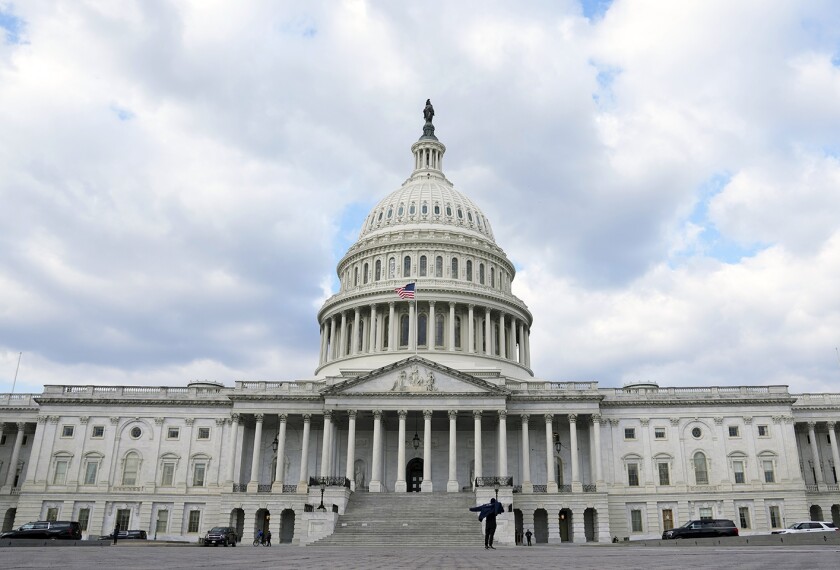Most state education agencies and local school districts are counting on academic coaches and teams of experienced educators to turn around underperforming schools.
But while those approaches have been used to meet the requirements of high-stakes state accountability programs, scaling up the practices to help hundreds of schools identified as not making adequate progress under the federal No Child Left Behind Act is proving too costly and unwieldy for some.
See the related story,
Under the federal law, Title I schools that fall short of their states’ goals for adequate yearly progress for two consecutive years are identified as needing improvement. Those schools are required to receive technical assistance and must each draw up a two-year improvement plan using practices grounded in scientifically based research.
States must set aside 4 percent of their Title 1 allocations for school improvement efforts, directing no less than 95 percent of that money directly to districts identified as having low-performing schools.
But state departments of education and local districts often face similar obstacles in following the federal law: They don’t have enough people to provide hands-on intervention in their struggling schools. They lack the expertise on their staffs to tackle the schools’ myriad challenges. They don’t have the money to expand school improvement efforts they’re already pursuing.
So states and districts are looking at large-scale strategies to help underperforming schools, with most focusing on districtwide reform efforts rather than parachuting into every school. There’s a greater emphasis on seeking partnerships with private and nonprofit organizations to bring in the expertise and resources to boost test scores more quickly.
Rethinking Roles
During a conference here in Baltimore last week, state and local education officials examined efforts under way to devise systems of support for low-performing schools and districts.
Joseph F. Johnson Jr., a special assistant to Ohio’s state superintendent, said state education agencies facing limits on their capacity must rethink every job vacancy and contract out work to those who show the expertise to improve schools.
“What is clear,” he told the gathering, “is so much that has been done in the past in states hasn’t worked.”
Mr. Johnson, who leads Ohio’s efforts to close the achievement gaps between students of dif ferent racial and ethnic backgrounds, also said state education agencies have lacked the necessary “commitment, dedication, and passion” in their attempts to turn around troubled schools.
“If we can’t model [that commitment and passion] as a state, we can’t expect it within the schools and school districts with which we work,” he added.
The Washington-based Council of Chief State School Officers and the newly established Center for Data-Driven Reform in Education organized the Oct. 3-5 conference, which attracted about 170 state and local education officials. The center, which is based at Johns Hopkins University here, received a five-year, $10 million federal grant to give states and districts guidance in identifying programs that are effective in raising achievement in low-performing schools.

Robert E. Slavin, the director of the center and a co-director of the Success for All Foundation, said school improvement policies must be crafted on a wide scale: “It’s not going to happen one kid at a time or one school at a time.”
Some contend that the complex work of improving academically lagging schools has been overshadowed by the federal law’s provisions for free tutoring and school transfers.
School improvement efforts may not be as “sexy or new” as supplemental education services or transfers, but they are what will bolster achievement, Jeff Simering, the legislative director for the Council of the Great City Schools in Washington, said during an interview earlier this month.
The U.S. Department of Education also has underemphasized school improvement interventions, Mr. Simering said.
“When push comes to shove, putting a kid on a bus or sending a kid to private tutor aren’t going to have as much impact as the curriculum decisions and service-delivery options that schools implement under their school reform plans,” he said.
But Fran Walter, who leads the instructional-change group for the Education Department’s office of student achievement and school accountability, said the department monitors all aspects of the law “equally and seriously.”
Both school districts and state education departments are responsible, under the law, for helping struggling schools meet their achievement goals. State education agencies must establish a “statewide system of intensive and sustained support and improvement” by using teams of experienced educators and other partners to help struggling schools, the law’s guidelines say.
Districts are charged with analyzing the schools’ data and budgets, along with identifying “scientifically based” strategies to improve instructional problems.
Ms. Walter is heading a three-year effort to monitor states’ implementation of the No Child Left Behind law, a revision of the Elementary and Secondary Education Act that President Bush signed in January 2002. The 14 reviews completed so far, she said at the conference, show that some state education agencies with school improvement experience are trying to figure out how to expand their capacity to serve more schools.
Other states are still trying to adapt their programs to take the law’s more prescriptive approach to lifting up struggling schools.
Building Capacity
Educators shared their strategies at the conference. In the Philadelphia public schools, for example, “quality-review teams” are dispatched to examine key aspects of low-achieving schools, ranging from their instructional programs to their overall climates.

Paul G. Vallas, the chief executive officer of the 190,000-student district, stressed that districts must consider “diversified management models.” Private companies or universities run dozens of schools in Philadelphia, an arrangement imposed by state lawmakers.
Contracting with high-quality private and nonprofit providers allows school systems to fill in the gaps and better meet schools’ needs, Mr. Vallas said. “It’s shown us that you don’t have to do everything in-house,” he said. “Let’s use the market to get the most cost-effective benefit.”
Representatives of North Carolina’s education department boasted about their hands-on, team-based intervention for schools identified as low-performing under the state’s accountability system. But the state targeted at most 16 schools in one year. The state can’t afford to duplicate those efforts, which cost up to $7 million, in all of the 138 schools missing the mark under the federal law. North Carolina will instead translate that work to help its 43 school districts needing improvement.
“What worries me with district assistance is, how many students will be sacrificed while the district builds capacity?” said Jackie Colbert, the assistant director of the school improvement division at the North Carolina Department of Public Instruction.




